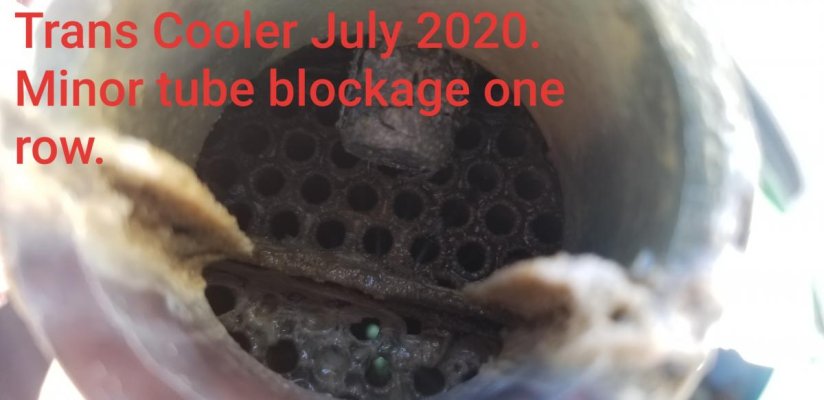Personally, I don't understand the "use Barnacle Buster" is "good enough" crowd??
There is much more to properly servicing the cooling system than just ensuring the tubes are relatively clear. It is critically important that we keep the various fluids in the correct locations and only in the correct locations. EG. we don't want seawater in the transmission oil, or seawater mixed in with the engine coolant, or worse yet (for those with aftercoolers) a seawater spray going straight into the engine air intake!!!
The only way I know of to prevent (or greatly reduce the probability of) these failures, is to periodically replace the various seals, O rings, etc. and to PRESSURE TEST the various components. Occasionally, the component itself will require repair or replacement. None of this is possible without taking the units off of the engine, and doing a complete off engine service.
As far as I know, BB is best used as a temporary measure to extend the existing season by clearing partially blocked passages until a proper off engine service can be done (say in the Fall).
I agree totally with kapnd, regular freshwater flushing can extend the time between the off engine services, but it does not eliminate the various problems.
However, as with all things boating, it is your boat, your engine, your money, and you being the person potentially stranded (with a vacation cut short) should a failure or severe overheat occur.
I also agree with the others about comparing accurate costs (same engines etc.) but $5000 for 2 engines does not seem way out of line to me. This cost can be cut down significantly by DIY which is usually not that difficult. Maybe hire a pro and have him instruct you as he goes along?
Good luck.

